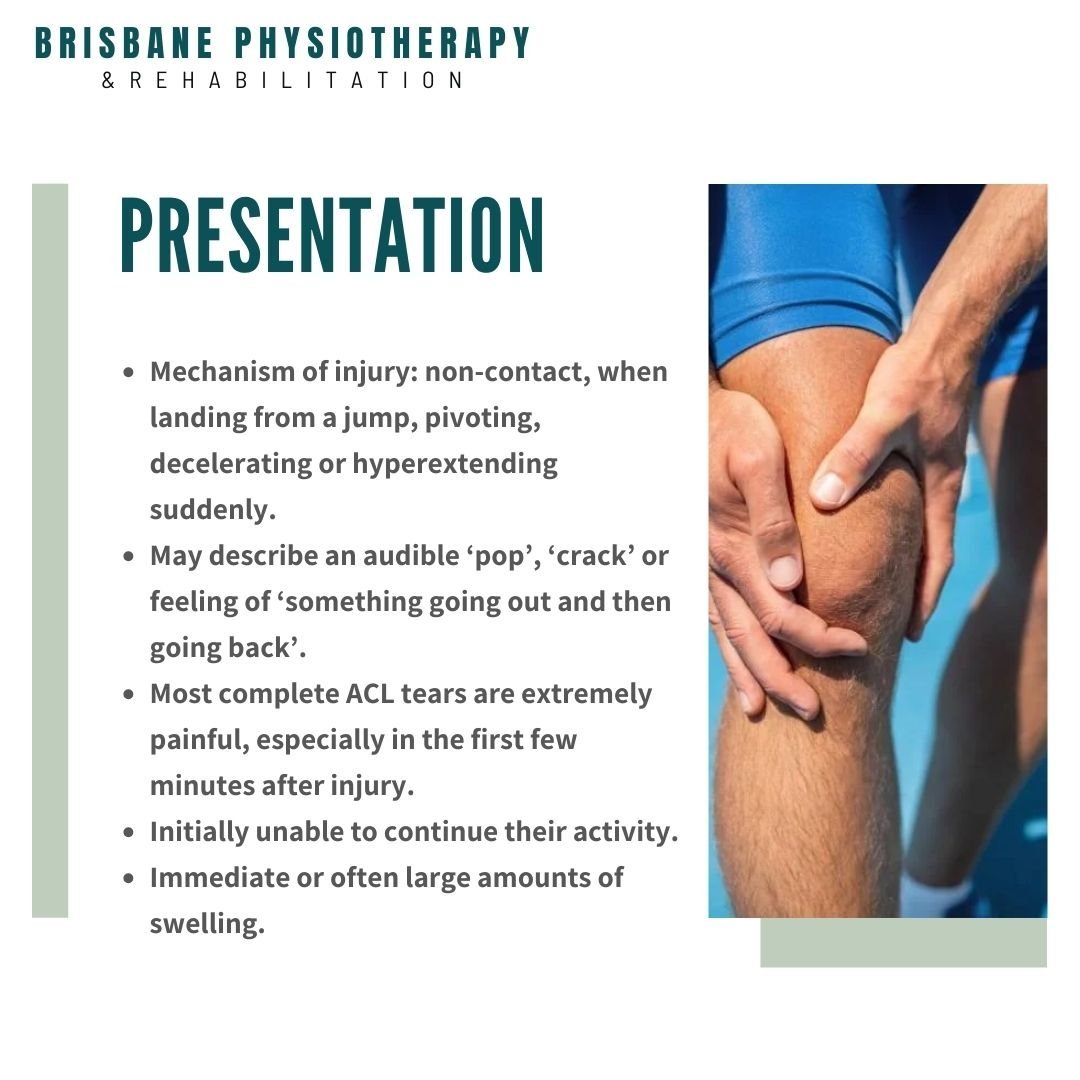What is an ACL Injury?
An ACL injury refers to an injury of the anterior cruciate ligament, one of the major ligaments in the knee. The anterior cruciate ligament (ACL) is located in the center of the knee and helps to stabilise the joint by preventing the shin bone (tibia) from sliding out in front of the thigh bone (femur).
ACL tears are relatively common among sportspeople. They occur most frequently in those who play sports involving pivoting, sudden stops, changes in direction or jumping (e.g. football, basketball, netball, soccer, European handball, gymnastics, downhill skiing).
The incidence rate of ACL tears is between 2.4 and 9.7 times higher in female athletes competing in similar activities. The injury can range from a partial tear to a complete tear/rupture of the ligament.
ACL tears may occur in isolation or in combination with associated injuries, particularly meniscal and articular cartilage injury, or injury to the MCL. They are the most common cause of prolonged absence from sport.
Overview:
Mechanism of injury: the majority of ACL tears occur in a non-contact situation, when the athlete is landing from a jump, pivoting, decelerating or hyperextending suddenly.
The athlete often describes an audible ‘pop’, ‘crack’ or feeling of ‘something going out and then going back’.
Most complete tears of the ACL are extremely painful, especially in the first few minutes after injury.
Athletes are initially unable to continue their activity.
There is immediate or often large amounts of swelling.
On examination:
Athletes have restricted knee movement especially when straightening the knee.
May have widespread mild tenderness.
Lateral joint tenderness
ACL injury Symptoms may include:
Sudden and severe pain in the knee
Swelling within a few hours after the injury
Loss of range of motion
Instability or a feeling that the knee is giving way
A popping sound at the time of injury
ACL Injury Diagnosis
Diagnosis of an ACL injury usually involves a physical examination, imaging tests like MRI, and sometimes arthroscopy (a minimally invasive procedure to look inside the knee joint).
ACL Rehab & Treatment
Treatment options for an ACL injury depend on the severity of the injury and the individual's activity level. The decision on whether to opt for initial conservative or surgical management is dependent on a number of factors:
the age of the patient
the degree of instability
associated abnormalities (e.g. MCL tear, meniscal tear)
whether or not the patient performs pivoting sports
the patient’s occupation (e.g. firefighter, police)
social factors, such as cost of treatment or time off work.
Conservative treatment: This involves rest, physiotherapy, and possibly the use of a brace to support the knee. It is typically recommended for individuals with a partial tear or for those who do not engage in activities that require a lot of knee stability.
ACL Reconstruction Surgery: ACL reconstruction surgery is often recommended for individuals with a complete tear or for athletes who want to return to sports that require knee stability. During the surgery, the torn ligament is replaced with a graft. The most common grafts used are the bone–patellar tendon–bone (BTB) autograft involving the central third of the patellar tendon, or the hamstring (semitendinosus +/– gracilis tendons) graft. It is recommended patients undertake physiotherapy pre-hab prior to surgery to improve outcomes. ACL reconstructions are performed ‘arthroscopically aided’ through a small incision with arthroscope. This utilizes small incisions to help visualize and make the tunnels for placement of the ACL graft. The aim of an ACL reconstruction is to replace the torn ACL with a graft that reproduces the normal kinetic functions of the ligament.
After surgery and with conservative treatment, rehabilitation is crucial to regain strength, flexibility, and stability in the knee, especially if returning to sport. It usually involves a structured physiotherapy program tailored to the individual's needs and goals.
Melbourne ACL Rehabilitation Protocol
- Pre-op Phase: Injury recovery & readiness for surgery
Goals: eliminate swelling, regain full range of motion, regain 90% stretch in the quads and hamstring compared with the other side.
Exercises and activities: regular icing, range of motion exercises, low impact aerobic exercise such as cycling, and a progressive strengthening regime.
- Phase 1: Recovery from surgery
Goals: get the knee straight (full extension), settle the swelling down to ‘mild’, get the quadriceps firing again.
Exercises and management activities: regular icing of the knee and graft donor site, compression of the knee and lower limb, basic quadriceps setting exercises, and gentle range of motion exercises.
- Phase 2: Strength & neuromuscular control
Goals: regain most of the single leg balance, regain most of the muscle strength, be able to single leg squat with good technique and alignment.
Exercises and management activities: knee and hip strengthening, core exercises, balance, gait re-education drills, and non-impact aerobics conditioning.
- Phase 3: Running, agility, and landings.
Goals: Attain excellent hopping performance (technique, distances, & endurance), progress successfully through an agility program and modified game play, Regain full strength and balance.
Exercises and activities: agility drills, jumping and hopping exercises.
- Phase 4: Return to sport
- Phase 5: Prevention of re-injury
Plyometric, balance and strengthening exercises.
Prognosis: 9-12 months.
It's essential to seek medical attention if you suspect an ACL injury, as prompt and appropriate treatment can help to prevent further damage and improve the chances of a successful recovery.





